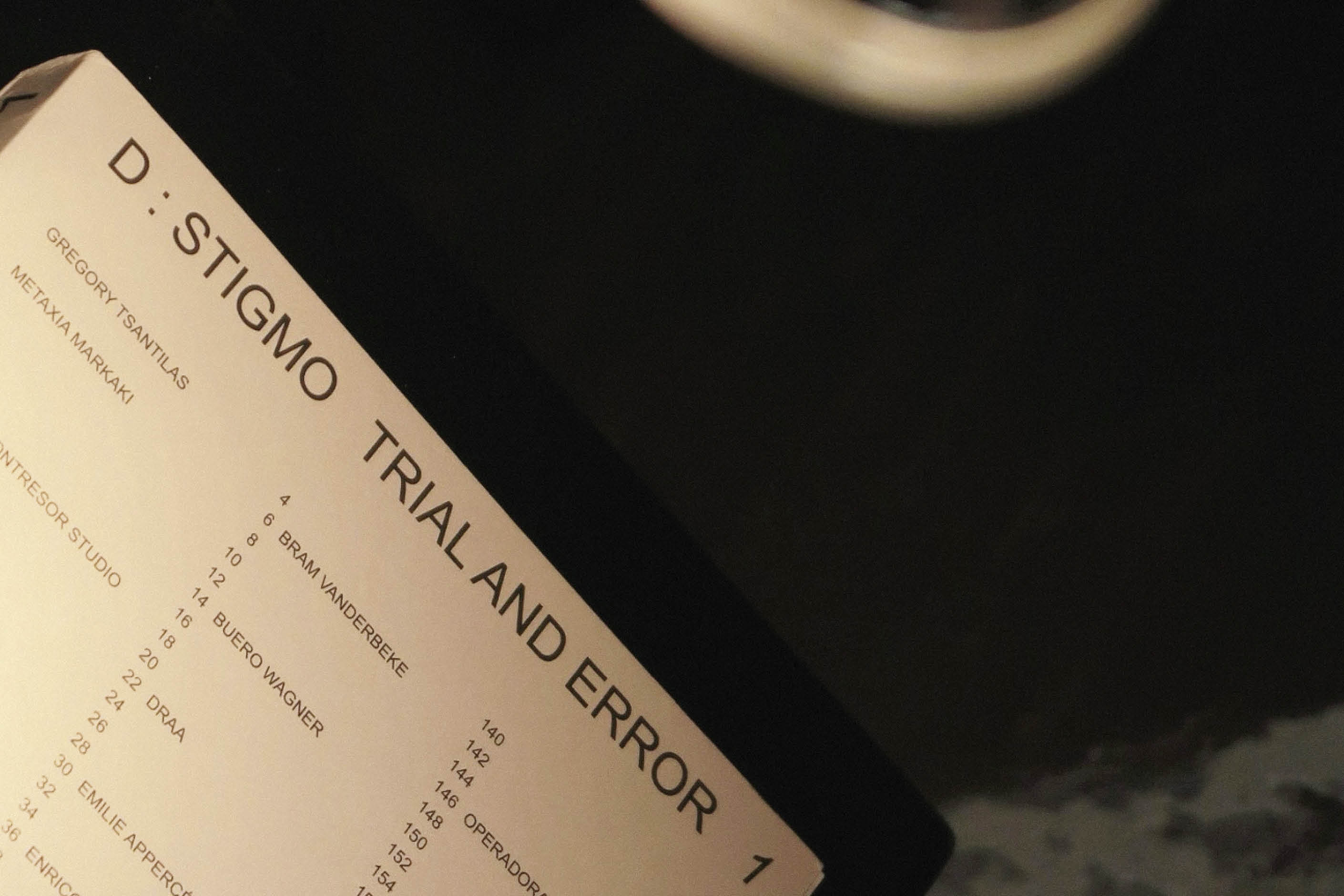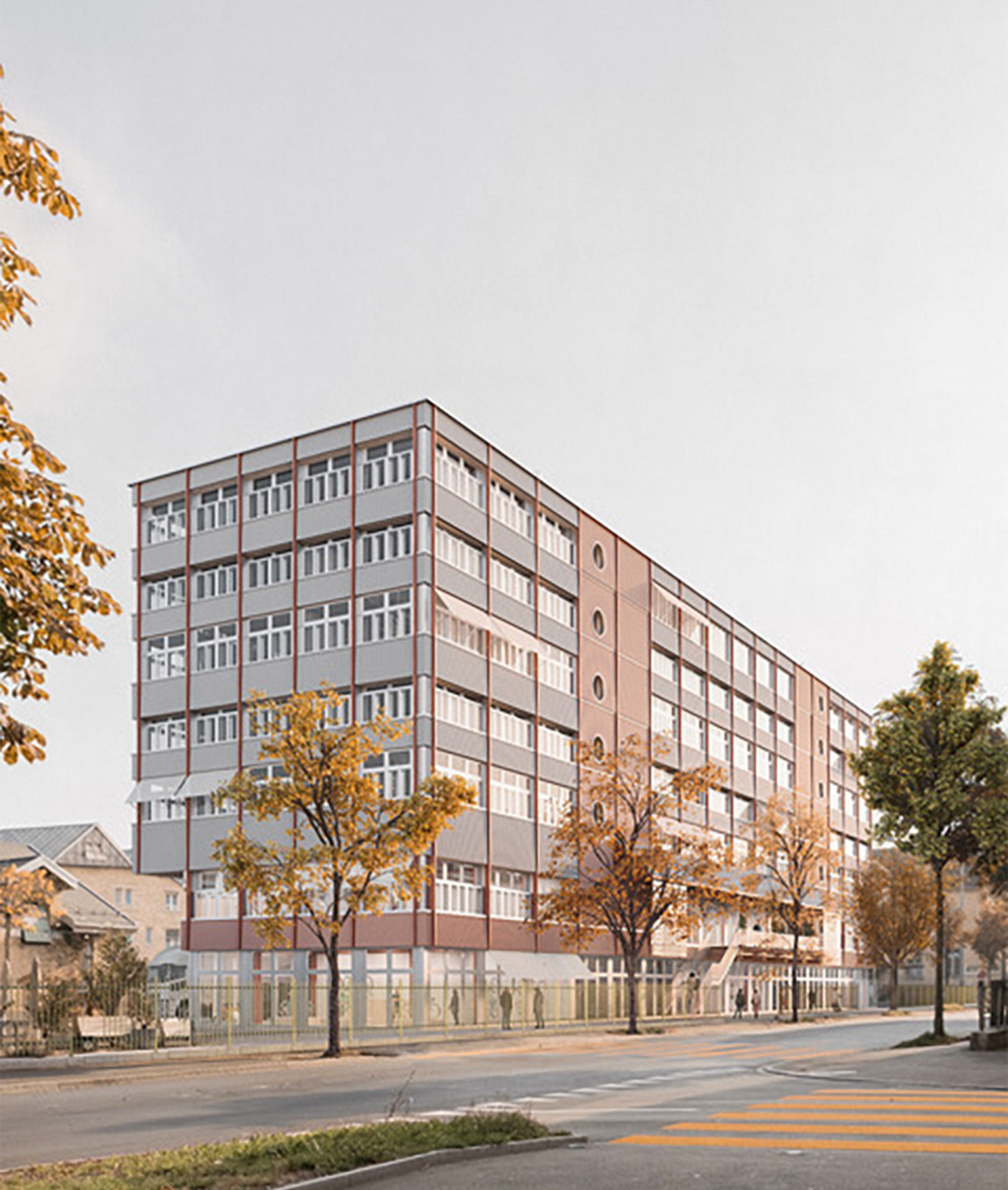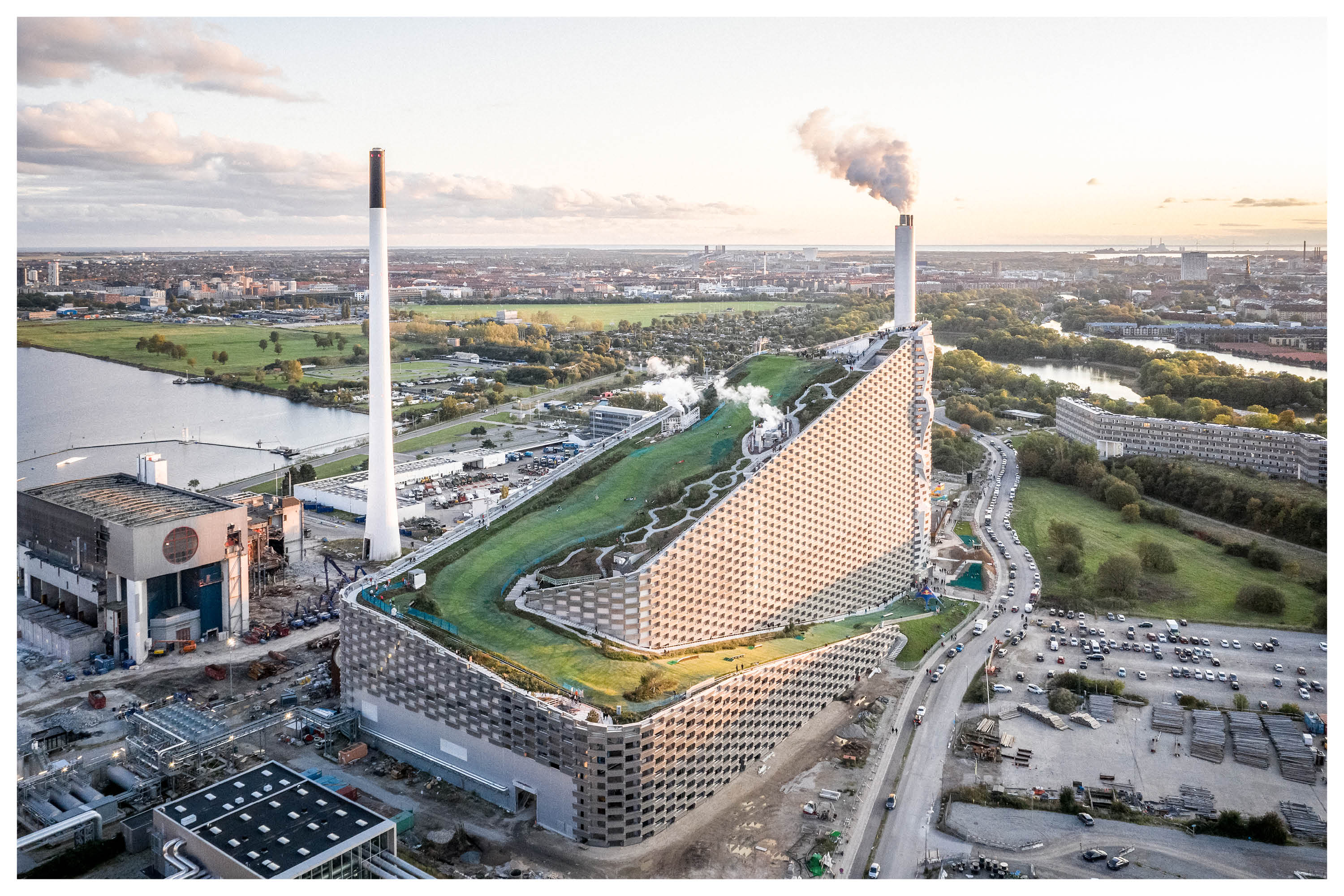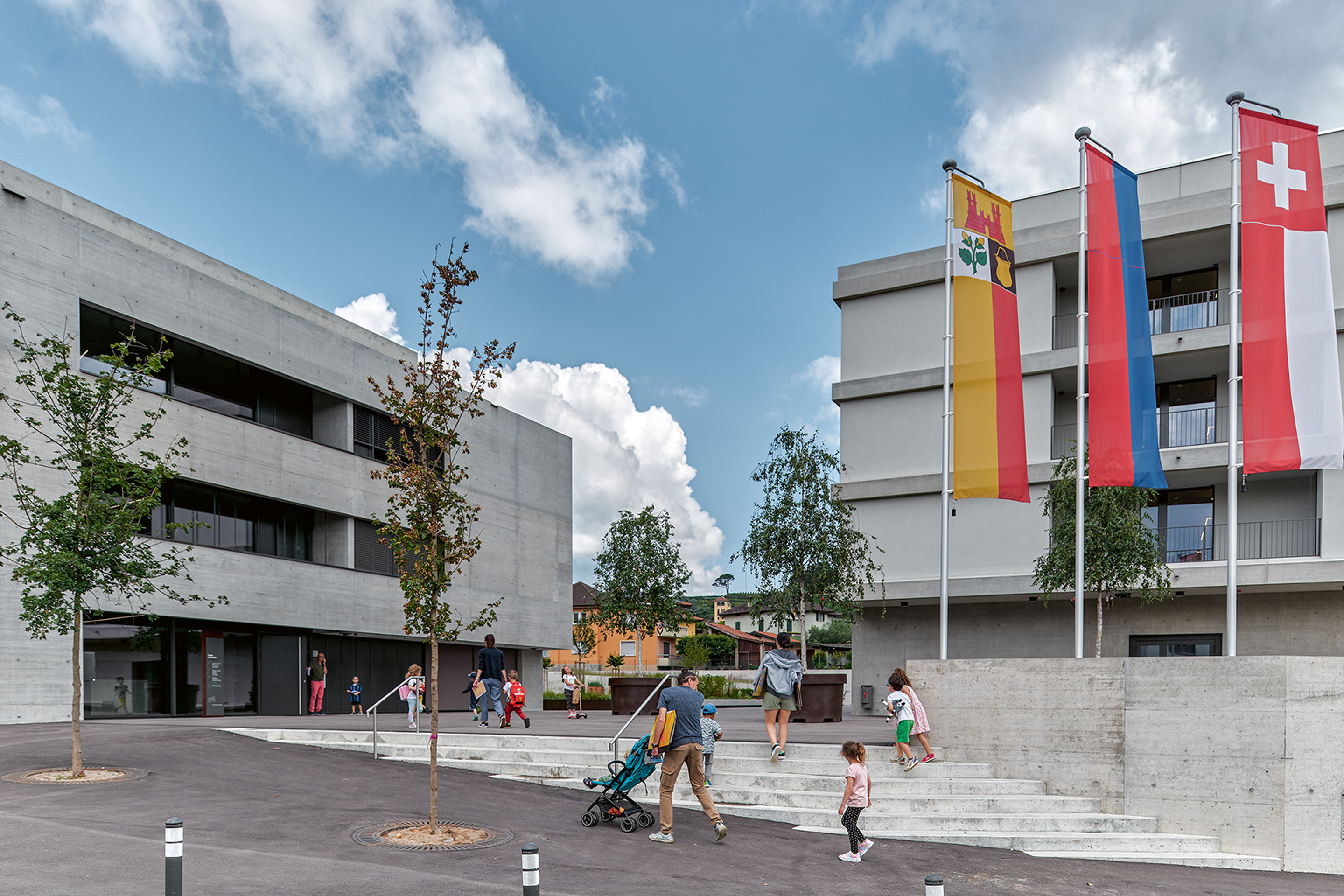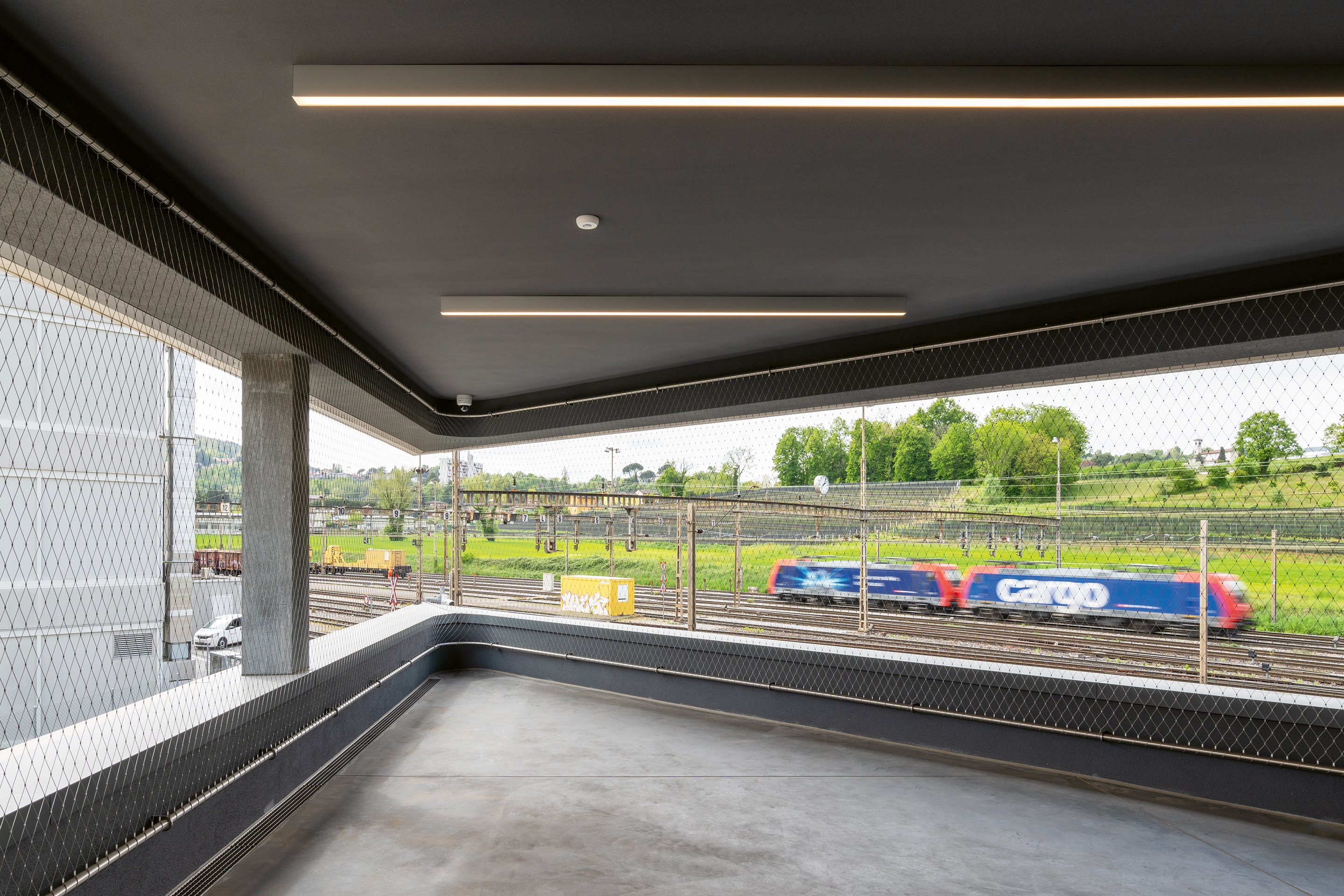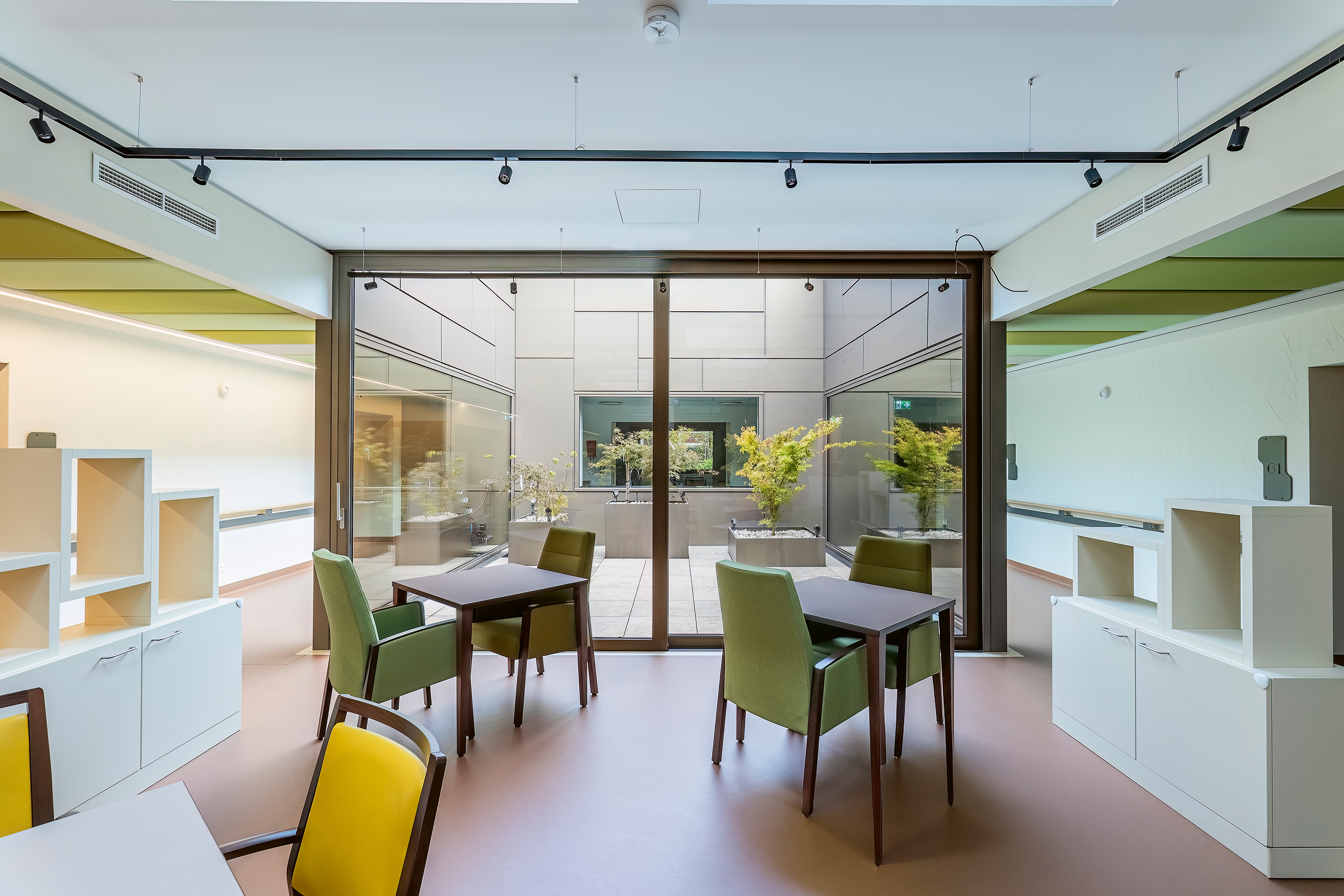DISTIGMO. Between Trial and Error, a Magazine in the Making
There is something surprisingly reassuring in deciding that a first issue should not coincide with a point of arrival, but with a trajectory: Trial and Error is exactly this gesture, DISTIGMO as a magazine that chooses to show itself in the making.
Testo in italiano al seguente link
On September 11, 2025, at Anthracite Art & Design in Zurich, the first issue of DISTIGMO was presented, a new independent magazine founded and directed by Gregory Tsantilas with Angeliki Papavasileiou and Oliver Cretton, in collaboration with confectdissect gmbh. The framework was Extended Matter, an exhibition project by Basalto Collective, part of the official program of Zurich Design Weeks1. A choice that was anything but casual: exhibition and magazine shared the same ground, that of process, trials, and deviations that shape every creative practice.
Eighteen months earlier, Tsantilas had received an invitation to curate an issue of the fanzine (farasi.zine) for the University of Thessaly in Greece. He sent out more than fifty invitations, hoping for ten or fifteen replies. Thirty-six came back, far too many for the intended format, and too rich to be reduced. That miscalculation — an “error in decision called for a detour from the initial idea”2 — led him to take another path. The detour became DISTIGMO. Instead of contributing the reflections he had planned to gather for farasi.zine, Tsantilas eventually chose to write about DISTIGMO itself, turning the magazine’s first contribution into the story of its own making.
From the outset, the magazine carried the mark of this origin: it would not seek a fixed identity, but instead embrace the unevenness of process. Tsantilas is clear about this in his introduction: Trial and Error is not only a title but a method, “a way of working that tests, questions, and adjusts”3. In Greek, he reminds us, lathos does not only mean error, but “deviation”3, a shift that interrupts habits, redirects thinking, and might open up new possibilities. He also observes that “print tends to privilege the finished, the curated, the refined”3; DISTIGMO, instead, makes the process legible: what matters is not only the result, but also the changes of direction that shape it.
The issue reflects this stance in both content and form. There are no rigid chapters, no uniform structure. Essays, sketches, process images, even WhatsApp screenshots, succeed one another like fragments in a collage. An article, Forever Wrong by Marina Montresor Studio, tells the story of the renovation of a 1912 house on Lake Garda, where what once seemed like flaws in the original design became points of strength for the project. Atelier Amont’s Setouchi Cabin explores how models and drawings evolve through trial, error, and shifting perspectives, turning initial nonsense into spatial intelligence, even embedding playful jokes that hint at the building’s resemblance to a bird. In the same way, the other articles follow this common thread while each taking a different path, from inflatable pavilions to chair-making to material experimentation.
And then there are contributions that move further into the theoretical. One of the most relevant is by Darius Ammon Karàcsony, who transforms his reflections on beginnings into twelve rules “inspired by Descartes and his methodical approach to knowledge and reasoning” 3, accompanied by notes and diagrams that make language behave like architecture. Another example is Metaxia Markaki’s Poetics of an Error, which lingers on words flagged by the spell-checker and refuses to correct them, treating them as poetic material. From the layered ambiguity of Periphereia in Greek, she imagines new terms—urbovillagers, mountainness, islandness—as instruments of knowledge and resistance3. If vocabulary fails us, she suggests, it can be reinvented. Perhaps the magazine itself follows this path, experimenting with forms and languages not as decoration but as ways of learning, new grammars of understanding.
DISTIGMO reveals itself above all as a process. In the introduction, Tsantilas recalls the words of one of his professors: “Whenever you are unsure of something you write or design, put it in a drawer for some time. Try to forget about it, and then, once it leaves your mind, open the drawer and rediscover it with a pair of fresh eyes” [3]. The magazine extends this gesture to its readers, inviting them not only to observe but to intervene: “to pose questions, to sketch on its margins, to write notes, or simply to leaf through it and put it in a drawer” 3. The participatory spirit was evident even at the launch evening, where visitors browsed the issue, asked questions, and exchanged feedback, turning the presentation into a conversation4.
When asked what will remain constant across issues, Tsantilas answers: “For the time being, only its fonts. Arial and Times New Roman” 4. Everything else, he explains, will keep evolving: “DISTIGMO is a project that will evolve with every publication and every collaboration… I try to approach inevitable ‘errors’ not as binary mistakes but as opportunities that can unexpectedly guide the project’s next steps” 4. What remains is a clear intention: at least one issue a year, open to the paths that errors and detours may reveal.
This is perhaps the strongest impression the magazine leaves. In an age that polishes difference into uniform perfection, DISTIGMO slows down, shows its uneven edges, and insists that error is not defeat but a form of knowledge. Turning its pages, one feels invited to experiment, to deviate, to search in uncertainty for a direction that may already be within us, though not yet clear.
More at: distigmo.com
Notes
[1] Extended Matter × Trial and Error, Zurich Design Weeks 2025, Anthracite Art & Design, Zurich.
[2] Gregory Tsantilas, Notes on Trial and Error, preliminary draft, printed for the launch, September 2025.
[3] Gregory Tsantilas, Trial and Error, DISTIGMO, 2025.
[4] Gregory Tsantilas, email to the author, September 2025.

